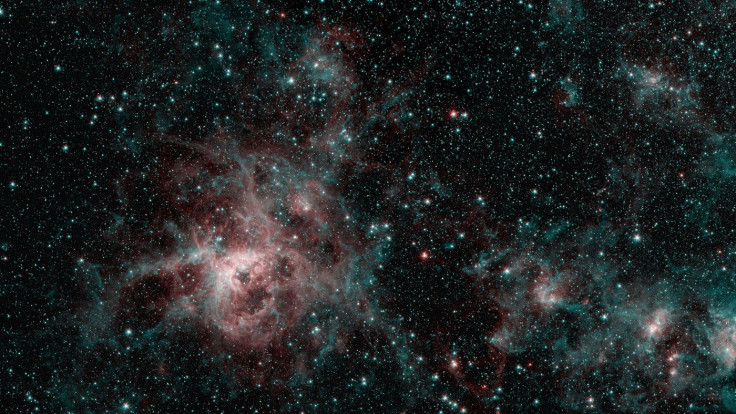Sharpest Images Taken Of Biggest Known Star Raise Questions About Previous Estimates
KEY POINTS
- The star R136a1 lies about 160,000 light-years from the Earth
- Its mass was thought to be 250 to 320 times the mass of the Sun
- A new study has downgraded its mass using a ground telescope
- The instrument took R136a1's sharpest images via speckle imaging
New ground-breaking research has made interesting revelations about the capability of ground telescopes and made us think just how massive a star can get.
R136a1, the biggest star to date, was thought to be about 250 to 320 times the mass of our own Sun. But a new study, to be published in the Astrophysical Journal, has downgraded the mass of this star to around 150 and 230 times the mass of the Sun.
What's even more interesting is the fact that this discovery was made with the help of a ground telescope. Called Zorro, the instrument captured the sharpest images ever taken of the star using a method called speckle imaging.
The Biggest Star Ever Found Just Revealed A Surprising New Insight https://t.co/Imha9nzxe5
— ScienceAlert (@ScienceAlert) August 23, 2022
The images of the star, which lies about 160,000 light-years from the Earth, were obtained by pushing the limits of the Zorro instrument on the Gemini South telescope of the international Gemini laboratory operated by the National Science Foundation's (NSF) National Optical-Infrared Astronomy Research Laboratory (NOIRLab).
"This result shows that given the right conditions an 8.1-meter telescope pushed to its limits can rival not only the Hubble Space Telescope when it comes to angular resolution but also the James Webb Space Telescope," study co-author Ricardo Salinas, who is the instrument scientist for Zorro, said in a news release. "This observation pushes the boundary of what is considered possible using speckle imaging."
The study was part of a project aimed at comprehending the cluster where the star R136a1 resides called R136. This cluster is part of the satellite galaxy of the Milky Way called the Large Magellanic Cloud and is situated in the Tarantula Nebula, which is a "hotbed of star formation," according to ScienceAlert.
This cluster consists of some of the most enormous stars known and whose masses have now been revised downward as well. These masses are critical in determining the upper mass function of massive stars, which means a change in their value could mean that our previous stellar upper mass limits are inaccurate.
"Our results show us that the most massive star we currently know is not as massive as we had previously thought," study co-author Venu Kalari of the Gemini Observatory said, according to the news release. "This suggests that the upper limit on stellar masses may also be smaller than previously thought."
Kalari put a disclaimer in the interpretation of the study, noting, "We began this work as an exploratory observation to see how well Zorro could observe this type of object. While we urge caution when interpreting our results, our observations indicate that the most massive stars may not be as massive as once thought."
Meanwhile, NSF Gemini Program Officer Martin Still lauded the observatory and the team. "Gemini South continues to enhance our understanding of the Universe, transforming astronomy as we know it. This discovery is yet another example of the scientific feats we can accomplish when we combine international collaboration, world-class infrastructure and a stellar team," he said, as per the news release.

© Copyright IBTimes 2024. All rights reserved.





















